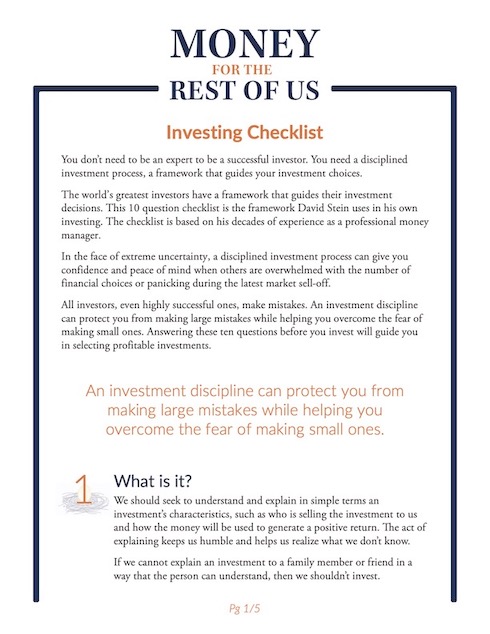Why and how smart beta factor investing and timing economic regime changes can lead to market outperformance.
In this episode you’ll learn:
- What is the market.
- What is tracking error.
- What are risk premiums.
- What factors are rewarded by the market over the long-term.
- How growth investing differs from momentum investing.
- Why growth investing underperforms value investing.
- What has been the excess return for investing in smart beta factors.
- What has been the excess return for timing economic and market regime changes.
Show Notes
Buy and Hold Versus Timing Strategies: The Winner Is…. – Todd Feldman, Alan Jung and Jim Klein
Summary Article
How To Outperform The Stock Market
In the early years of my career as an investment advisor, I spent an inordinate amount of time defending active stock managers who were underperforming their market benchmark.
An example of a market benchmark is the S&P 500 Index, which tracks the performance of U.S. large company stocks.
My institutional clients chose these active managers based on the managers’ long-term success in outperforming the market. After all, why pay an active management fee unless the manager can outperform the market net of fees, especially when there are low-cost index funds and ETFs that can closely replicate market performance.
The Market
What do I mean by the market?
In its broadest sense, the market is the total value of every investment opportunity that exists in the world weighted by each investment’s size, including stocks, bonds, real estate, etc. It represents the average holdings across all investors.
This global market portfolio can then be divided into subsets, such as the U.S. stock market. The U.S. stock market is the sum of all U.S. stocks weighted by the total market value of each company’s outstanding equity shares. The U.S. stock market represents the average holdings across all investors who own U.S. stocks.
A market index that approximates the U.S. stock market is the Russell 3000 Index. The S&P 500 Index in turn is a subset of the overall U.S. stock market. The S&P 500 is comprised of the largest 500 U.S. stocks weighted by the total market value of each company’s outstanding share.
When a client hired an active stock manager we assigned that manager a market benchmark or index that best represented the universe of stocks in which the manager selected its individual holdings.
Underperformance
Each quarter we compared that manager’s performance to the chosen market index. Clients usually chose managers who had outperformed the designated market index on both a short-term and long-term basis.
Often these managers’ style would go out of favor after they were selected, and they would underperform for a period of time. Sometimes these performance droughts lasted three years or more. Everyone felt bad about this underperformance; the client, the investment manager and me.
As these bad times persisted, I would tell my clients the only way for a manager to outperform its market benchmark is to structure a portfolio that differs meaningfully from the market. This period of underperformance was not because the manager was unskilled. It was because the manager’s particular style was not currently being rewarded.
Factors and Smart Beta
An active manager’s style can be described as the factors that drive its performance such as value, growth, momentum, low volatility etc.
A value manager for example invests in stocks that are cheap relative to the market. At times these factors earn excess returns above what one could earn investing in the overall market.
The market itself is the sum of what all investors own. In other words, the average investor owns the market. The market is the most diversified portfolio an investor can own.
An investor or manager that owns a portfolio that differs from the market is no longer average. They are willing to suffer through bad times such as underperformance or losses in order to outperform the market and earn an excess return.
The excess return from investing in certain market factors such as value is compensation for suffering through these bad times. These excess returns are sometimes called risk premiums. Some risk premiums are persistent in that when the factors that generate those risk premiums are held in a portfolio for a long enough period of time the investor will eventually outperform the market.
These persistent factors are called smart beta.
Growth and Value Investing
Other factors such as growth investing do not earn a persistent risk premium. An investor who maintains a long-term exposure to stocks with higher growth rates in terms of sales or earnings will eventually underperform the market.
Why? Because growth stocks tend to be more expensive than value stocks. Growth stocks are often highly recognizable names such as Apple and Google, and they are found in sectors of the economy experiencing rapid, exciting changes like technology and healthcare.
Growth investors often assume the good times will continue indefinitely so they are willing to pay more to own the stocks of high growth companies. Invariably, the rapid growth slows, the investors are disappointed and the stocks underperform the market.
Meanwhile, investors often believe the bad times experienced by struggling companies or sectors will continue indefinitely and so the stocks become cheap relative to the market and to growth stocks.
Invariably, the bad times end and the cheap stocks get re-priced upward, earning the value investor excess returns relative to growth stocks and the overall market.
Smart Beta ETFs
One of the most rewarding things I learned and acted on as an investment advisor was that I didn’t need to pay active managers high fees to get exposure to market factors that earned excess returns. I could do so inexpensively by building client portfolios using ETFs and index funds that were exposed to persistent excess return generating factors such as value.
My portfolios differed from the market portfolio held by the average investor and they ultimately outperformed the market.
As an investor you can choose to be average and own the market and earn the market return. Or if you are willing to suffer through bad times, you can outperform the market by holding a portfolio with smart beta factors that differ from what the average investor owns.

